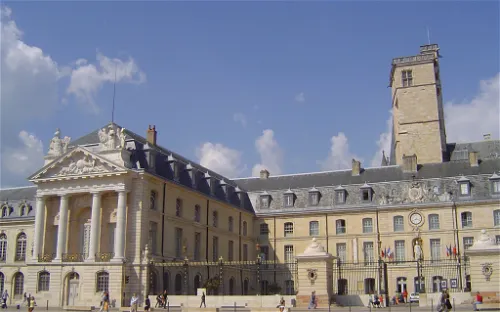Palace of the Dukes of Burgundy and its collection
The Palace of the Dukes and Estates of Burgundy, located in Dijon, is a remarkable example of preserved architecture. The oldest parts of the palace date back to the 14th and 15th centuries, showcasing the Gothic style of the period. These include the ducal palace, the seat of the Dukes of Burgundy, and various other structures such as the ducal kitchens and the tour de Philippe le Bon.
17th and 18th Century Additions
The majority of the Palace of the Dukes and Estates of Burgundy that can be seen today was constructed in the 17th and 18th centuries. During this time, the palace was used as a royal residence and housed the estates of Burgundy. The architecture from this period reflects a classical style, adding another layer of historical significance to the site.
Current Uses of the Palace
Today, the Palace of the Dukes and Estates of Burgundy serves multiple functions. It houses the city's town hall, providing a glimpse into the current administrative workings of Dijon. Additionally, it is home to the musée des Beaux-Arts, one of the oldest museums in France, offering visitors a chance to explore a vast collection of art and historical artifacts.
Art & Design Historic house Medieval art & Early Renaissance art Renaissance art & Early modern art
#1 Art & Design in Dijon #1 Historic houses in Dijon #1 Medieval art & Early Renaissance art museums in Dijon #1 Renaissance art & Early modern art museums in Dijon #24 Art & Design in France #22 Historic houses in France #11 Medieval art & Early Renaissance art museums in France #11 Renaissance art & Early modern art museums in France #72 Medieval art & Early Renaissance art museums in Europe #61 Renaissance art & Early modern art museums in Europe








































